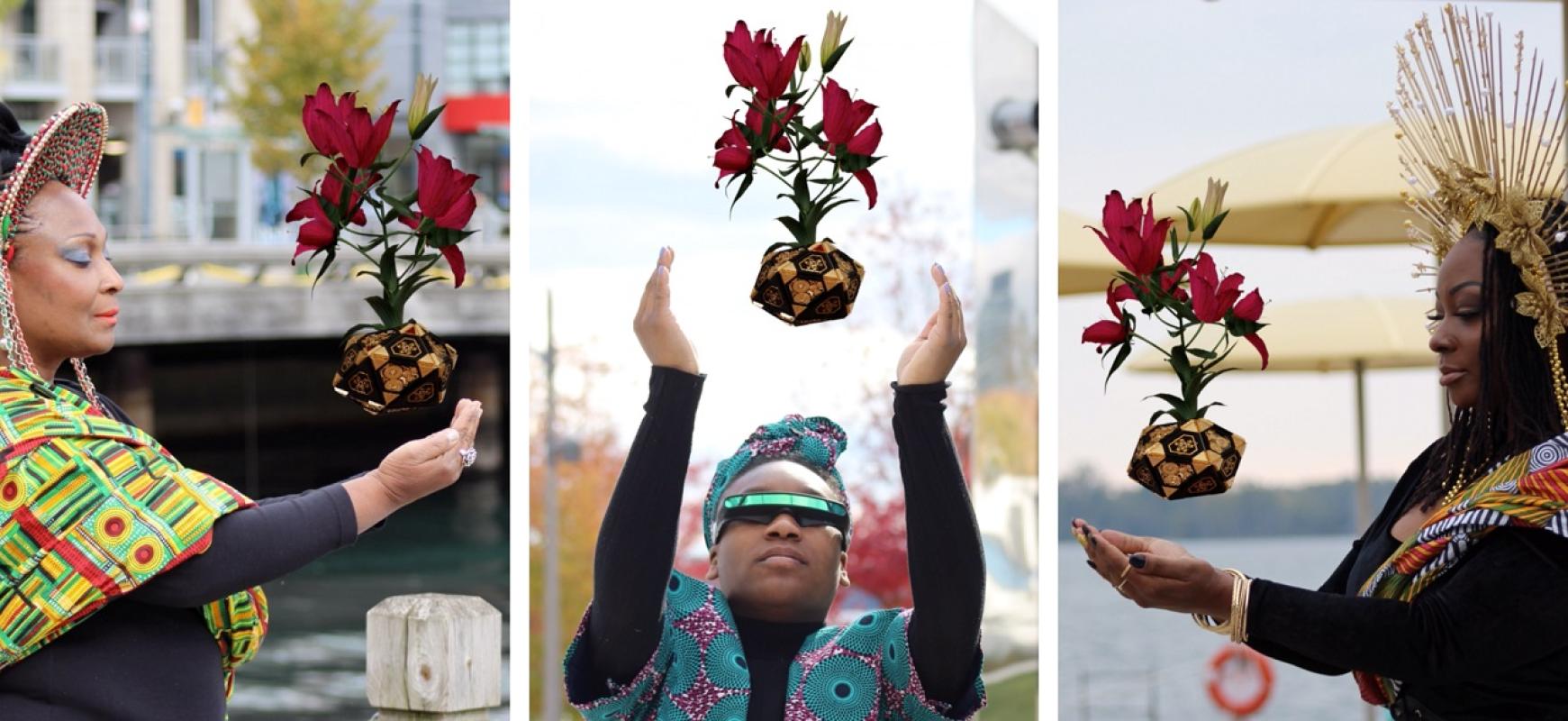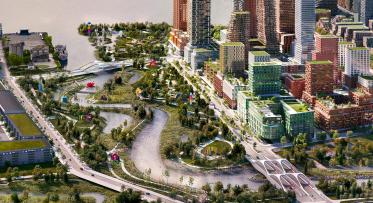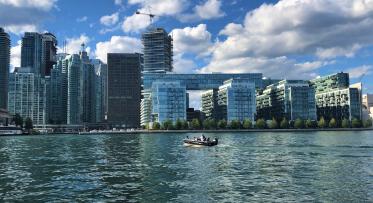Building Connections Towards a Thriving Community
Photographs from BSAM Canada’s Earthseeds: Space of the Living. From left to right: The Elder, The Youth and The Adult.
POSTED: AUGUST 17, 2021 I PUBLIC ART
By: Sarah Askett
The final piece in our three-part blog series highlighting accomplishments from the 2020-21 Integrated Annual Report looks at how the first-ever Artist-in-Residence program is helping create thriving and accessible communities. The program was launched in mid-2020 in partnership with the Waterfront BIA. After receiving many submissions, emerging artists group BSAM Canada was awarded the residency in September 2020 and launched their project titled Earthseeds: Space of the Living.
To learn more about how this residency is creating opportunities for artists and connecting communities with the waterfront, we sat down (virtually) with BSAM Co-leads and artists, Nico Taylor and Queen Kukoyi.
How has the residency impacted you as an artist?
Queen: In terms of the residency, it's just been phenomenal and an amazing experience: Being able, especially as a black artist, to take up space in places we may not have had access to otherwise and being able to bring in more people with similar experiences. On one end we're getting to connect with artists within our collective, but also with artists that haven't necessarily been a part of our collective before - making new connections. Also, getting to work with larger organizations that we may not have necessarily had access to has been pivotal in our individual art practices and our art practice as a collective.
Nico: This residency has really helped me tune out that thought process of ‘I can't be an artist because I don't specialize in any one medium’ and really come into the things that I do and can do well. It's been so humbling to speak to larger organizations that we would never have been able to talk to previously, and talk about our ideas, what we are passionate about, and what we want to bring to this city.
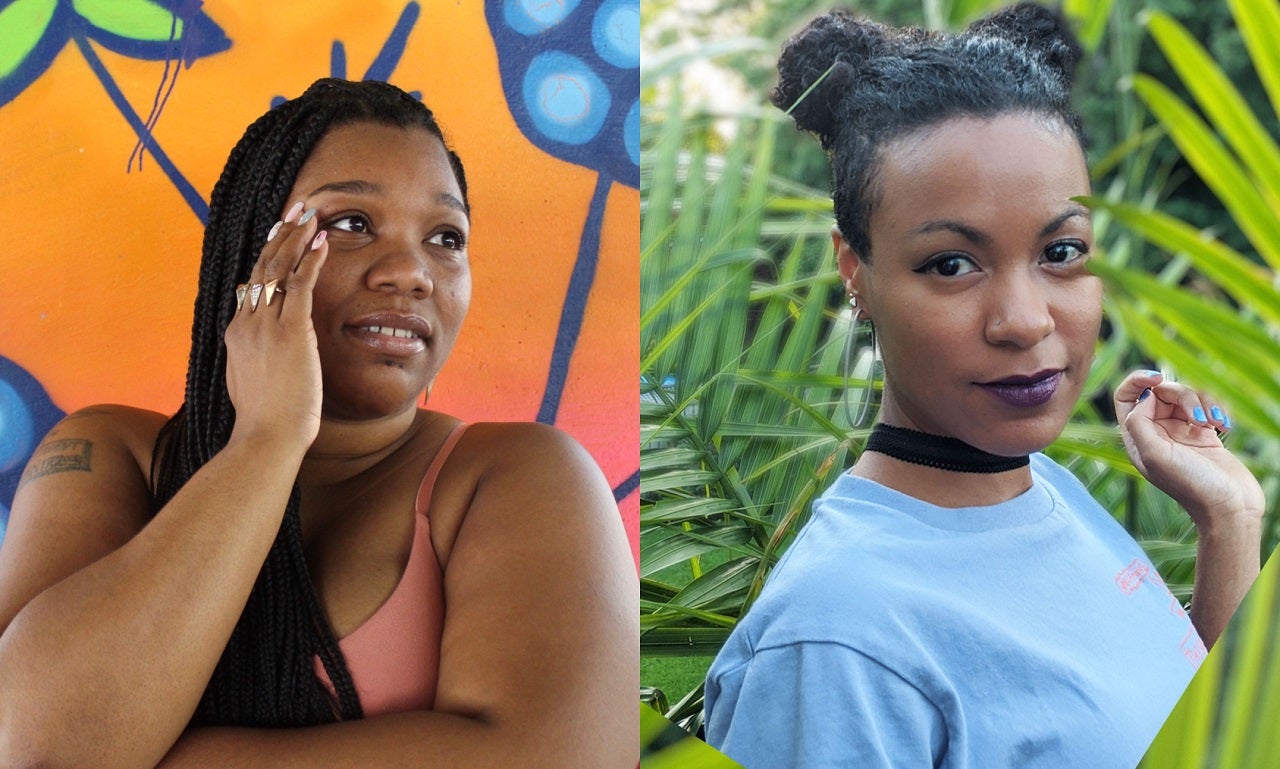
BSAM Canada artists Queen Kukoyi (left) and Nico Taylor (right).
How do you see your residency and this artist in residence program contributing to creating a more accessible waterfront?
Nico: When we think of access, it's not just ‘how can you get to this place’, but it's also ‘who is able to get to this place’. When we create the pieces that we are creating, we're making sure the voices of marginalized folks are embedded within each design, because historically they have not been able to access this area or have been intimidated by it or have seen themselves as not welcome. Everything that we're doing has that in mind, and hopefully can push that conversation into a larger-scale dialogue.
Queen: Often when we're talking about inclusion, we forget to talk about who's excluded and how to bridge that gap between those two things. In a lot of ways, we need to move towards action, which also requires a conversation about how do we act now? I would dare whoever views our art to look at it beyond just a conversation on inclusion, but how to act. Because when we're talking about creating a healing space, we're not just asking people to talk about creating healing spaces. We're asking people to act on it as well.
Has this program helped bring the waterfront communities closer?
Nico: Speaking more in terms of businesses, we've been able to bring in a lot of other waterfront organizations and businesses into this residency. We were able to speak with the Westin Harbour Castle along with the Power Plant, the Harbourfront Centre, and the Waterfront Neighbourhood Center. For us, it's been nice to see the bridging of all these different organizations collaborating on this one thing that we're putting out.
Queen: We'd be able to better answer that question a few months from now as we begin to see more of the projects released and rolled out, and we get to see how people access them and how people engage and interact with them. I think our being able to collect the stories and how people are engaging and interacting with the art, and conversations around why the art was created, will aid in understanding how our community really looks at the waterfront and how they may now perceive it as a space that they can claim and take up space in as well.
What has been your favorite part or experience during the residency
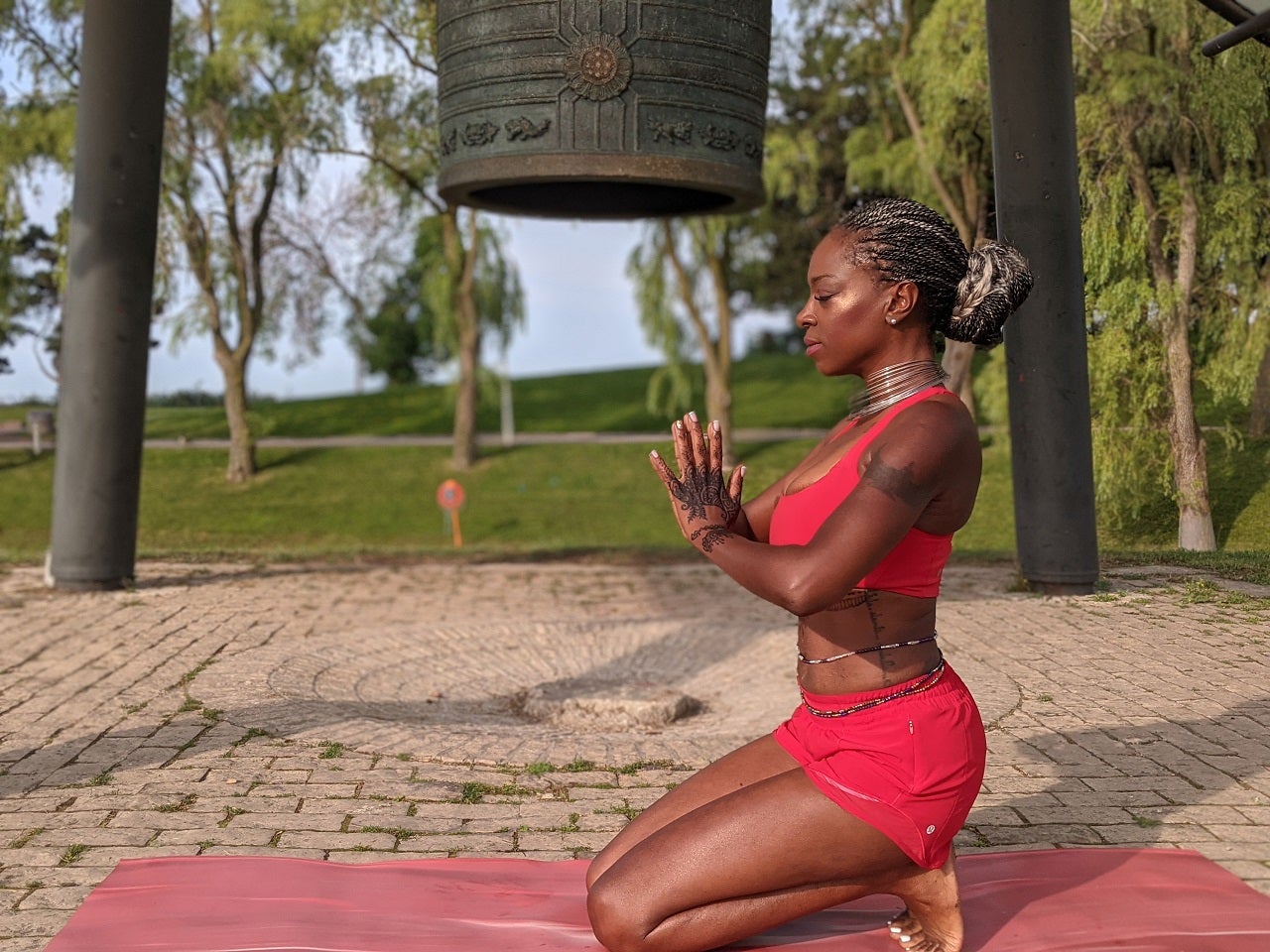
Vonnette Forde of Higher Love Yoga during the filming for Earth — the final piece of BSAM Canada’s Kemetic Yoga Series. Photo courtesy of BSAM Canada.
Nico: My favorite, and the one that I'm the proudest of, is our Kemetic Yoga Series with Vonnette Forde of Higher Love Yoga. We have such a great team and coming together is just a lot of fun. Every one of them are extremely talented people and the quality of the video that we put out is very rich, too. I really enjoy the creative process. We're going to have a session where we get some of the public to physically participate in-person instead of just online, so it’s lovely that what we first envisioned can still be played out in some way. We started shooting at the Westin Harbour Castle hotel in February and since that time we've put out three videos: Air, Fire, and Spirit. We just filmed Earth at Ontario Place.
Queen: With the short animation film, we have been able to build this collective of artists that is so intergenerational. Having youth that are just starting their careers, illustrators and animators and being able to gather at all those intersections in age range on this project is so beautiful. We're all at different places in our careers but meeting each other as equals to discuss this one project that we're all so passionate about and can't wait to see evolve is exciting. If I had to choose, I'd say the film because I've been the most excited for it.
Learn more about the Waterfront Artist in Residence program and our other public art projects over the past year in our 2020-21 Integrated Annual Report.

